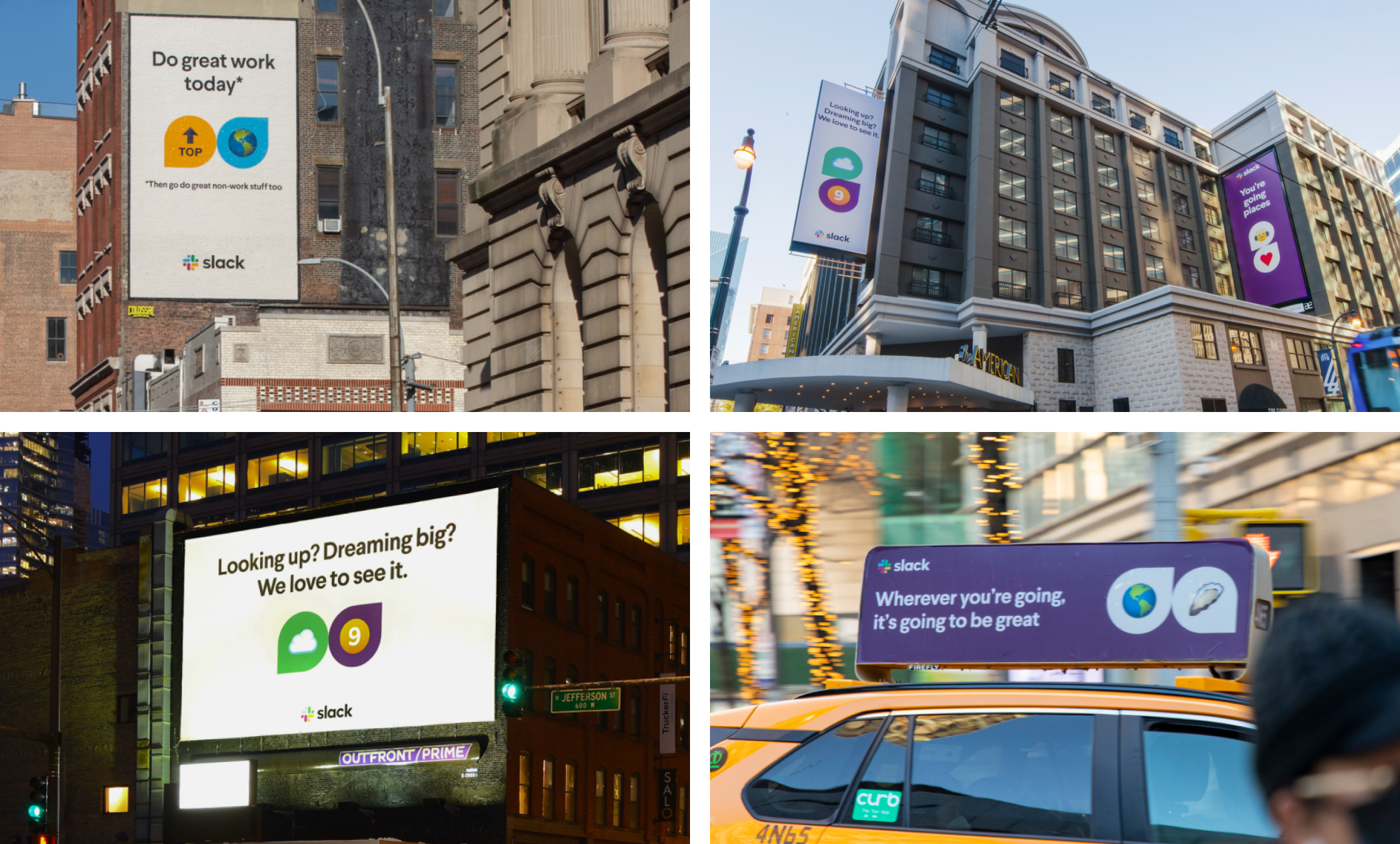I’ve spent the past five years at Slack building both the Slack brand and the Slack creative team. While I’m immensely proud of both accomplishments, the latter takes the cake. While it’s important to hire the right people, set clear expectations and develop seamless processes, we wouldn’t be one of the most collaborative and wonderful teams in the industry without a shared set of values. Yes, I might be biased, but I also might be right. 😁
But of course it’s not that simple. While it’s common for teams to create core values and use them as a guiding light, for us, it was almost the other way around. We often heard that our team felt so special, so different. So when it came to defining our values, we built on what was already working; honing in on key parts of our current reputation we wanted to uphold. Empathy, consistency, collaboration, curiosity, and inspiration were the things that kept rising to the top, in both who we are as a team, but also how we show up within our greater company and the ethos of Slack.
Empathy
Being empathetic is the ability to understand and share the feelings of another. This is an incredibly helpful value, not just in how we show up for each other, but also in the work we put out into the world. The creative team is responsible for the majority of the work outside of the product that you see, read or experience. It’s a big responsibility to make sure we’re not only considering the audience, but also the audiences’ needs and mindset. How might we meet people where they are? This value resonates deeply with our tone and voice. Several posts and release notes have gathered a lot of traction, and dare I say fans, simply because we were self-aware, acknowledged our mistakes or checked in on your well-being. It’s an unexpected difference from other software companies.
What’s nice about this value is that it’s applicable with the people you work with. We all have successes, struggles, concerns and curiosities. Approaching collaboration with empathy helps create trust, a sense of safety and almost always results in better work.
As an example, we did a campaign in early 2022 around random acts of kindness. It was a full-on out of home campaign in New York, Atlanta, and Chicago — including billboards, digital signage, and subway takeovers. We focused the work around messages that we felt people needed to hear in the middle of winter after two long years of the pandemic. We built the whole campaign around positivity. Signs read: “You’re doing a great job,” “You’re going places,” and even “Kindness always comes back around,” which was so thoughtfully placed on a turnstile. So yes, we live out empathy as a team, but through our work as well.

Consistency
Consistency is really important when you’re defining a brand because you’re essentially building an external reputation. If you’re constantly changing how you look over time, it’s harder for people to trust you, get to know you, or understand you. At Slack, we know showing up in a consistent manner is very important as a brand, and I’m proud to say we were able to move our numbers for aided awareness (a brand tracker metric) from 19% to over 40% in one year primarily by being consistent.
From a team perspective, consistency becomes reliability. Having confidence in your team mates that we’ll always be there for each other on the other side of the screen whether it be for a call, a huddle, or even just to confirm something in a channel via a message or reacji. Providing a consistent experience for each other, our partners and stakeholders means people can look at us and say “That team’s a team I can count on.”
Collaboration
Teamwork makes the dream work isn’t just a catchy phrase. It’s a fact. For every project, we devise a team with someone from each area of the Creative team: video, design, copywriting and operations. This allows us to approach the project, and the issue at hand, from multiple perspectives to come up with the strongest solution. By bringing people together in a collaborative environment, we are able to consider the project more holistically by removing silos, connecting the task to other projects and understanding our goals. In addition to understanding our projects, this type of team facilitation also allows for a deeper understanding of our team mates; honoring varied skills and personality traits that can often be the difference between good and great work. In my opinion, once you are a part of the team, you will always be working together.
Curiosity
I’m always encouraging our team to be curious. I’ve noticed folks who are less tenured in their career are sometimes fearful of asking questions because they don’t want to show a lack of comprehension or knowledge—I did it early in my career as well! To combat the concern and provide more psychological safety, I reframed the hesitation as a positive attribute. By asking questions from a standpoint of curiosity, you no longer feel silly or dumb about having a lack of knowledge. By asking questions, you are now in the driver’s seat, seeking a path to understanding. As the years have passed, this is a trait that comes naturally to me and I often use it as an opportunity to role model this value. Whether it’s asking questions in a kick-off meeting, showing curiosity about a proposed solution or tossing in open-ended questions into a brainstorm, I hope more people can help each other achieve their, “Oh, I didn’t even think of that!” kind of lightbulb moment.
Inspiration
A core value phrase that guides our team is “we make it memorable.” Being heavily inspired by other companies is common in tech with the assumption that if it’s working for someone else, it should work for us. While there’s merit in competitive analysis, I’d much rather inspire creativity within the team to pave our own way. We can confidently believe in what we’re doing because we know who our customers are, who our brand is, and a desire to solve our own problems.
To us, inspiration is constantly asking ourselves how we’re thinking differently, how we’re bringing more ideas to the team and how we’re keeping each other motivated. New problems, new media outlets and new growth strategies are constantly appearing. Inspiration helps us shift from seeing these as obstacles to viewing them as new opportunities. Following up on an earlier value; achieving this with consistency does not mean you have a bland brand. Creating new ways to step our game up when we’re already so happy with what we’re doing is the foundation of everything we do. In my opinion, it’s what shifts something from a solution to a strategy.
Creating your own core values
Defining your team’s core values is no easy feat—the process will likely be different for everyone. If you’re having trouble, ask yourself and ask your team: What kind of team do you want to be on? What were the qualities of teams you’ve loved being a part of in the past? What teams have you admired and why? There will be common themes among your answers, and mapping them out will bring you closer to making them a reality for you and your team.
—
Josie Jeffries is the former Director of Creative at Slack.
